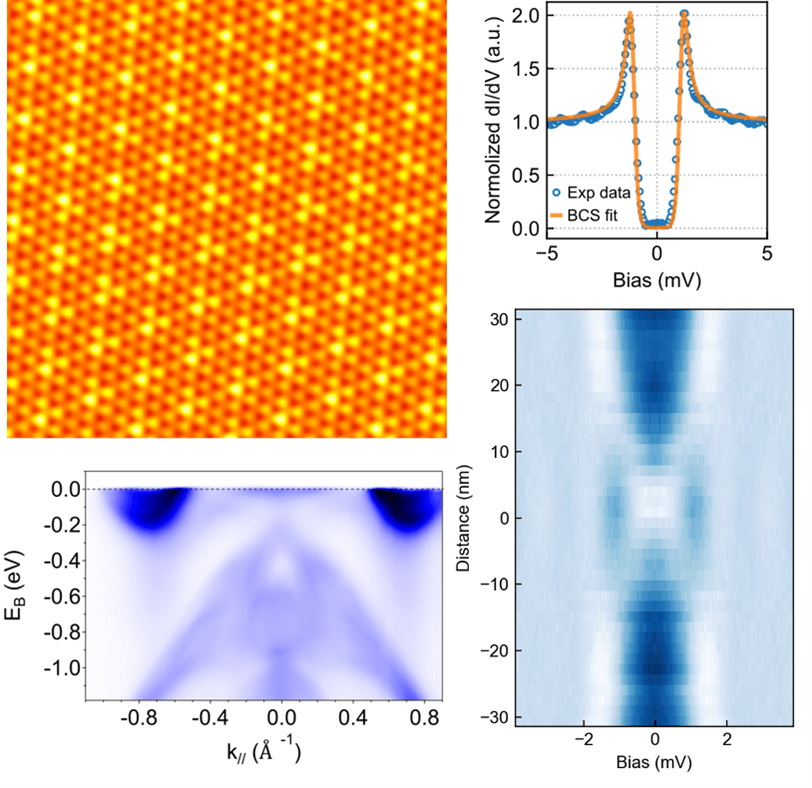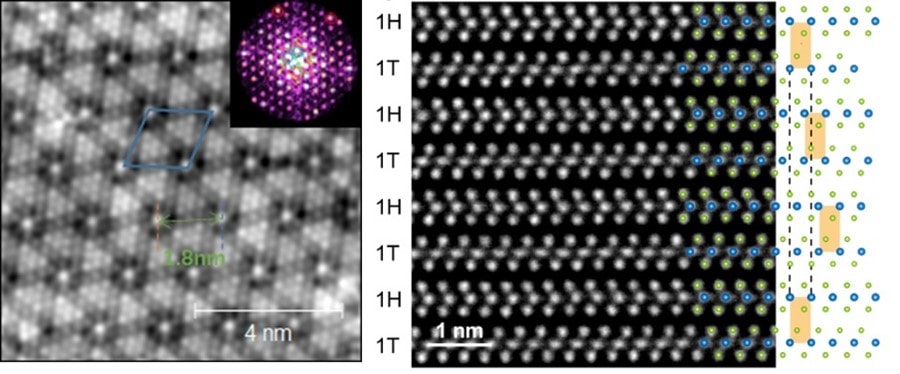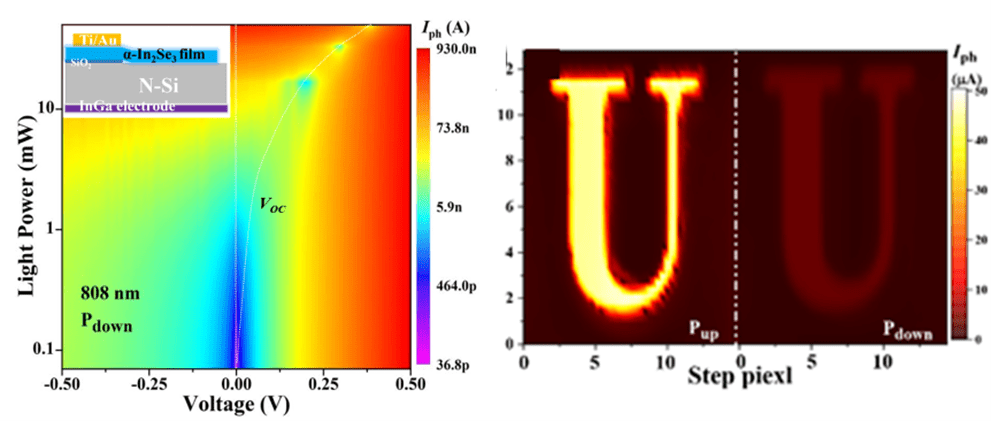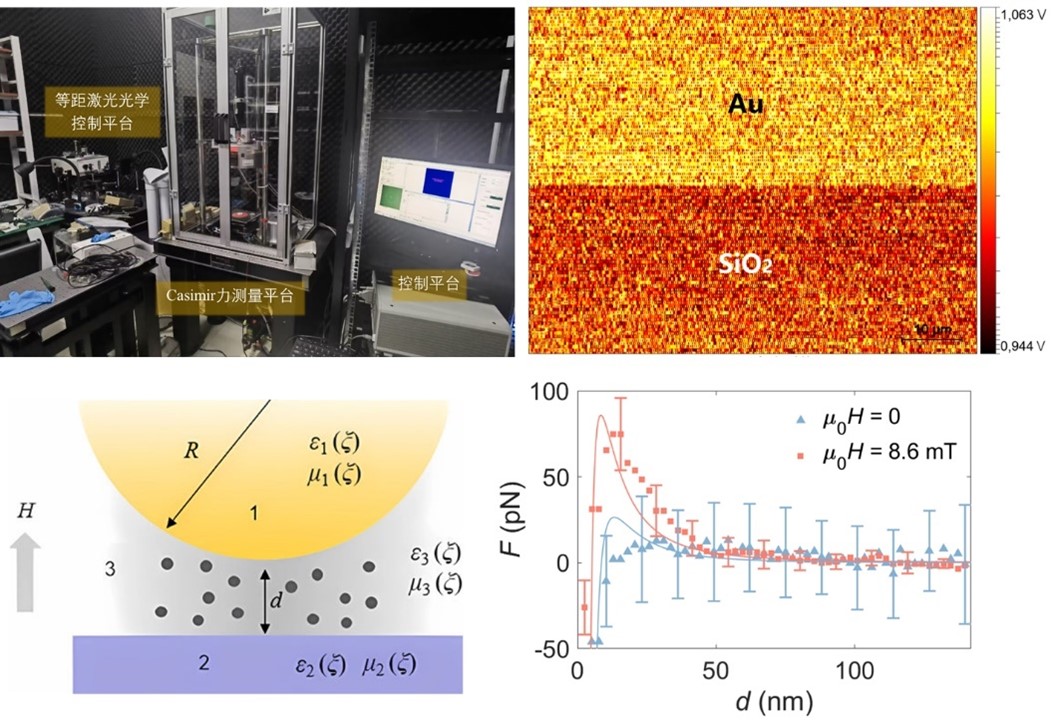- Quantum Phenomena in Low-Dimensional Materials
-

Our research focuses on investigating the superconductivity, electronic correlations, and topological properties of low-dimensional materials, along with their quantum states and manipulation. We employ advanced techniques such as low-temperature high magnetic field scanning tunneling microscopy, angle-resolved photoemission spectroscopy, and electrical transport measurements for: 1) Exploring the interaction between charge order, topological superconductivity, and various quantum states in two-dimensional quantum materials; 2) Advancing the development of quantum devices by tuning charge order, superconducting order, and topological order. Our researches pave a new path for the design of next-generation quantum devices.
- The Development of Novel Two-Dimensional Materials
-

Our laboratory utilizes advanced synthesis techniques, including single crystal growth, chemical vapor deposition, and molecular beam epitaxy. Our research focuses on: 1) Innovative two-dimensional thin-film materials exhibiting unique physical properties; 2) Universal methodology to construct stable superlattice single crystals with high stability; 3) Integrated ultra-high vacuum (UHV) cluster systems for advanced material characterization and device fabrication. Additionally, we undertake the task of developing high-quality industrial low-dimensional materials facilitating their future applications.
- Novel Functional Devices Design and Application
-

The applications of two-dimensional quantum functional materials have attracted considerable attention. Our laboratory is dedicated to: 1) Advancing the development of optoelectronic and ferroelectric devices with enhanced functionalities and superior performance; 2) Employing novel materials, including misfit layer compounds, to construct ferroelectric and superconducting devices; 3) Exploring the potential of high-response tunable devices utilizing two-dimensional materials under high-frequency electric fields. Our primary goal is to expand the application scope of these materials and enhance their performance across a wide range of device types.
- Quantum Effect of Casimir Force
-

The manipulation of novel quantum effects, with a particular focus on the precise control of Casimir force, represents a significant area of research within microelectromechanical systems (MEMS). The undergraduate innovation research team in our laboratory is committed to the following objectives: 1) Advancing the development of an advanced scanning Casimir microscope capable of high-resolution imaging and analysis; 2) Investigating the manipulation of Casimir force through the application of external fields; 3) Exploring the physical and chemical phenomena occurring within micro-cavities. These promote the future advancements in device technology and quantum materials application.